 |
|
GPS 2-F9 (Delta IV) 25 March 2015 |
Space Launch Complex 37 Cape Canaveral Air Force Station |
| United Launch Alliance (ULA) launched one of their Delta IV rockets on a mission for the U.S. Air Force at 2:36 p.m. on 25 March 2015 from Space Launch Complex 37 at Cape Canaveral Air Force Station. The rocket carried the Navstar Global Positioning System (GPS) 2-F9 satellite into orbit. According to ULA, GPS 2-F9 is a "next generation GPS satellite, incorporating various improvements to provide greater accuracy, increased signals, and enhanced performance" for military and civilian users. The launch photos were taken from the NASA Causeway viewing area only 2.7 miles from the pad. Another highlight of the launch was the unusual afternoon fog bank that rolled in to obscure the launch pad. | |
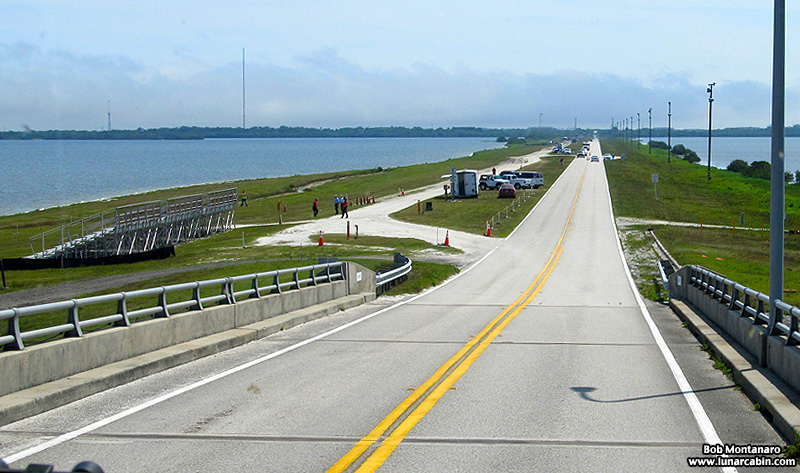 |
|
| Approaching the NASA Causeway viewing area on the left between Kennedy Space Center and Cape Canaveral Air Force Station. Cape Canaveral Air Force Station is straight ahead. | |
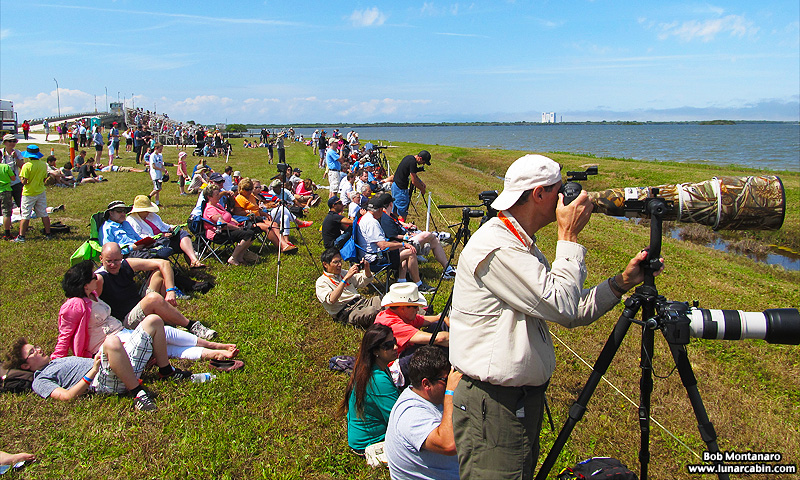 |
|
| A view of the Kennedy Space Center Visitor Center guests settling in before the launch. | |
 |
|
| The Delta IV launches from Launch Complex 37 at left. The white building at right is the Horizontal Integration Facility where the rocket is assembled before being hauled out to the pad and raised to the vertical position. Note the peculiar fog bank is beginning to move in. | |
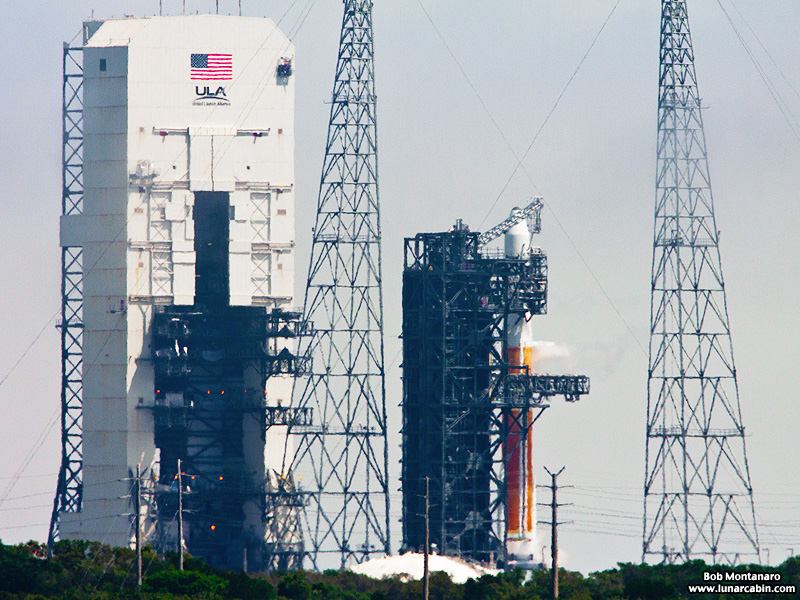 |
|
| A photo taken during the brief, unobstructed view of the rocket before the fog bank rolled over Space Launch Complex 37 and obscured most of it. The tall white structure at left is the Mobile Service Tower (MST) that can move back and forth on rails. The MST can be brought forward to enclose the rocket while it is being prepared for launch. The rocket itself is standing next to the Fixed Umbilical Tower (FUT) through which fuel and power can be pumped into the rocket. The spindly towers to the left and right of the FUT are Lightning Protection Towers. | |
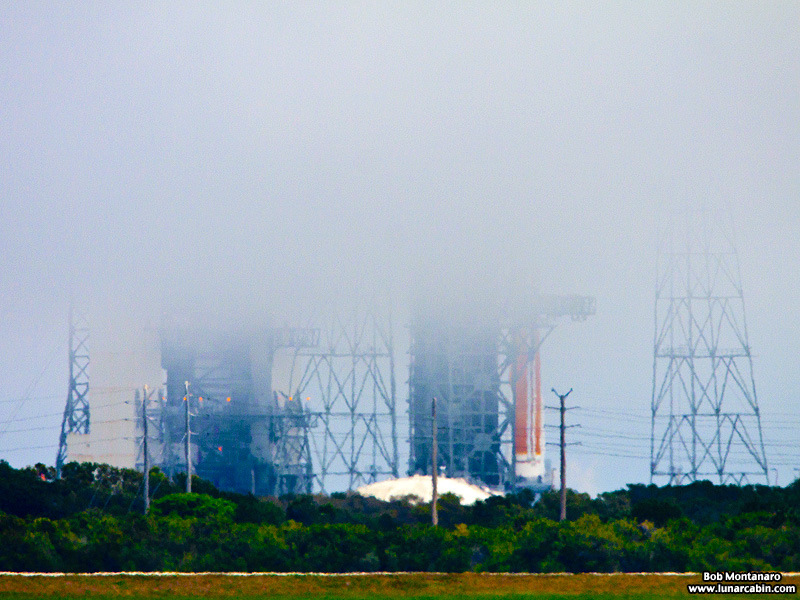 |
|
| The fog has rolled in. | |
 |
|
| Flames spray up the side of the rocket at booster engine ignition. | |
 |
|
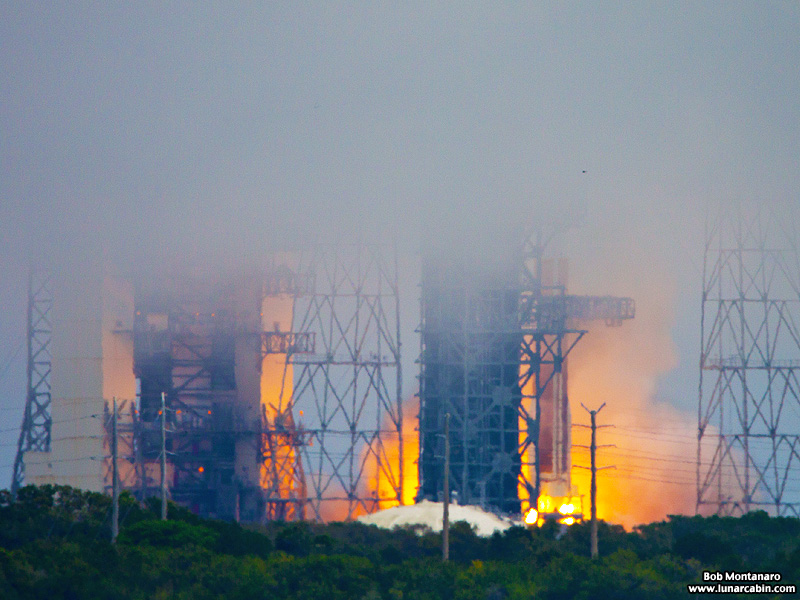 |
|
| Ignition of the two solid rocket motors . . . . | |
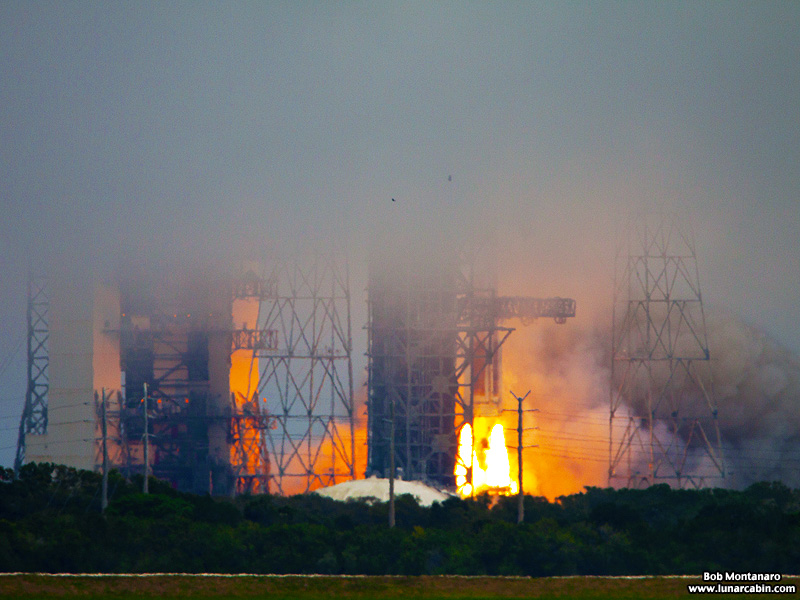 |
|
| . . . . and liftoff! The two dark specks in the fog just above the center of the image are soaring Vultures. | |
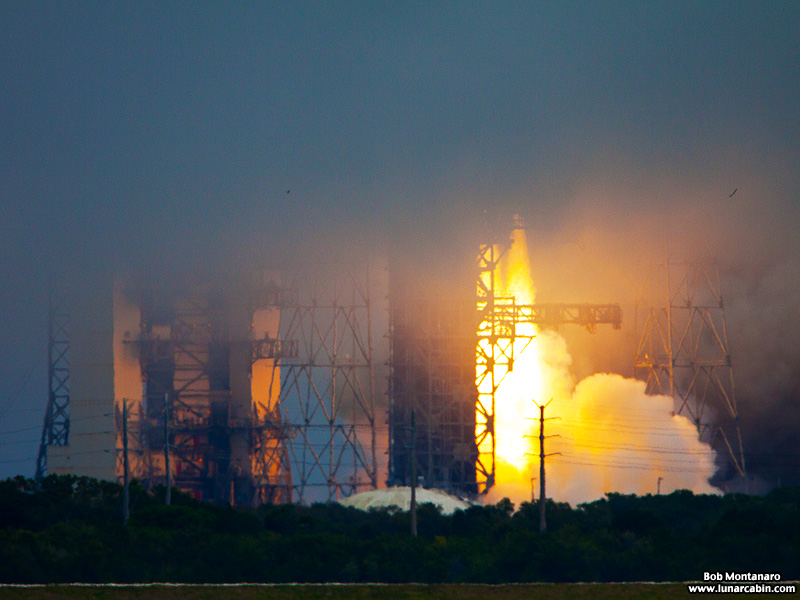 |
|
 |
|
| The rocket completely disappeared into the fog . . . . | |
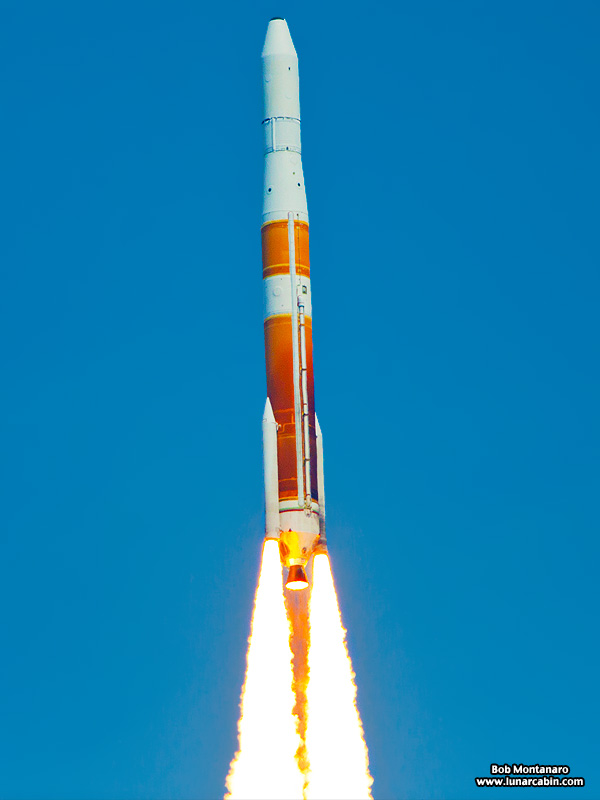 |
|
| . . . . to reappear moments later into clear sky. | |
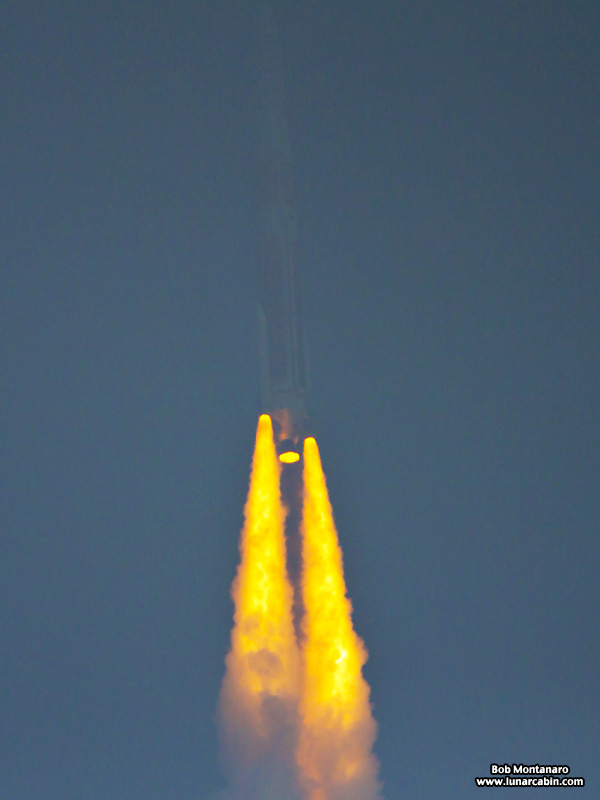 |
|
| Then it was back into the clouds again . . . . | |
 |
|
| . . . . then out of the clouds for the rest of the flight before disappearing into the blue. | |
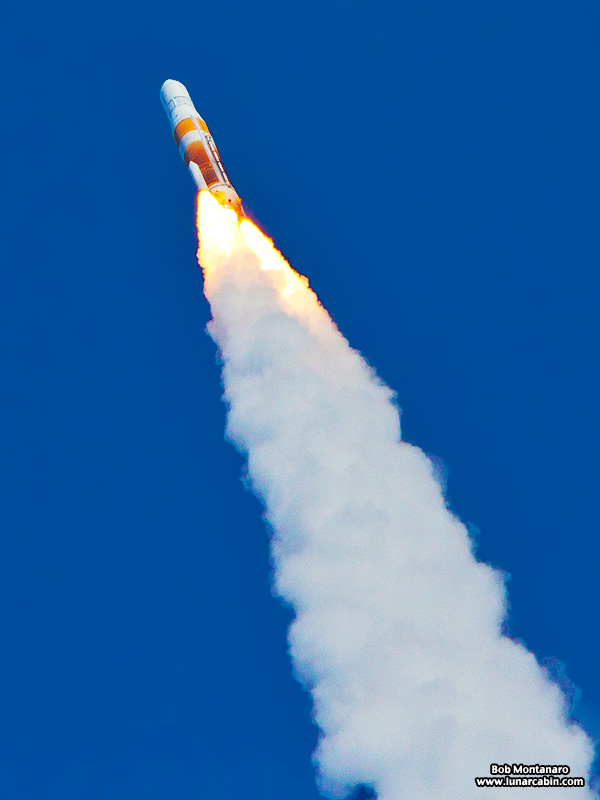 |
|
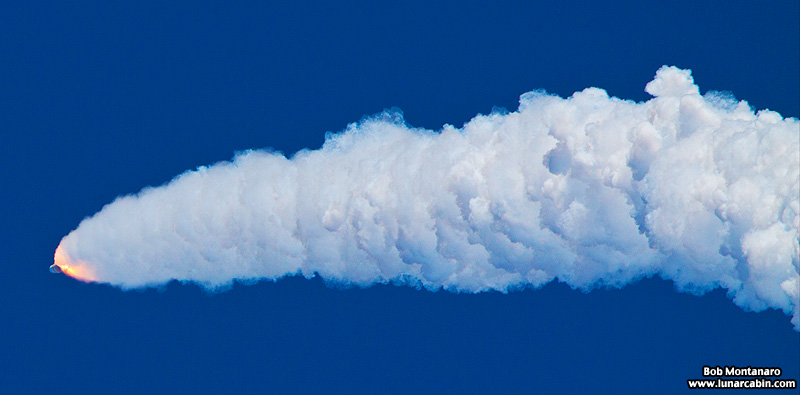 |
|
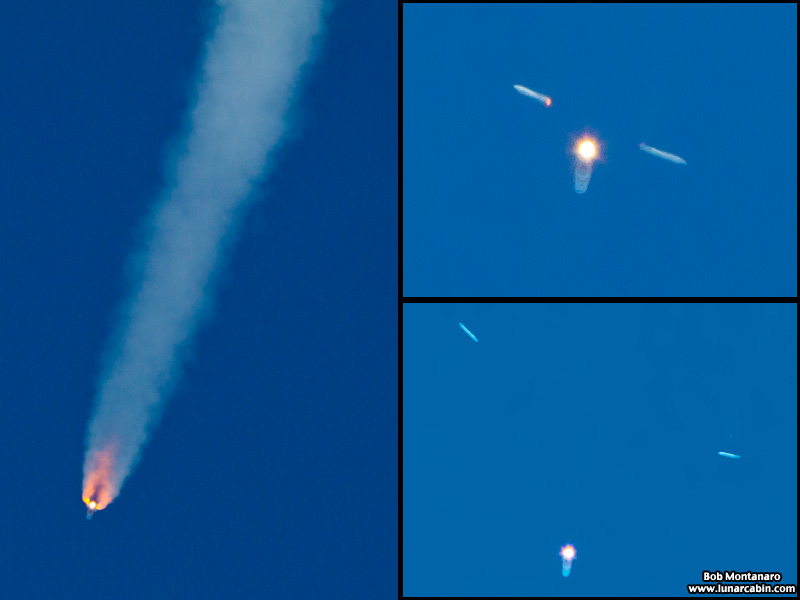 |
|
| Clockwise from left: The solid rocket motors start to burn out before being jettisoned to fall away into the Atlantic Ocean. | |
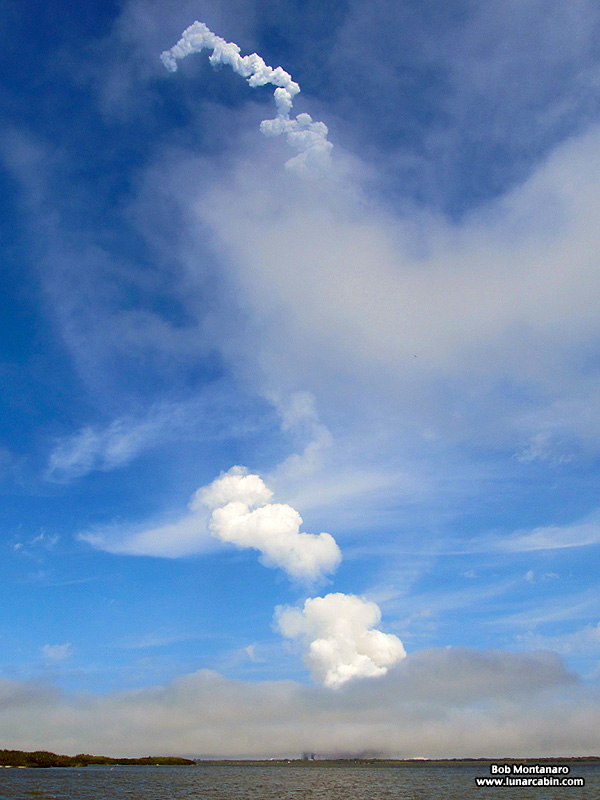 |
|
| A wide-angle view shows the exhaust trail along with the thick fog bank blanketing the pad and the different levels of clouds the rocket passed through. | |
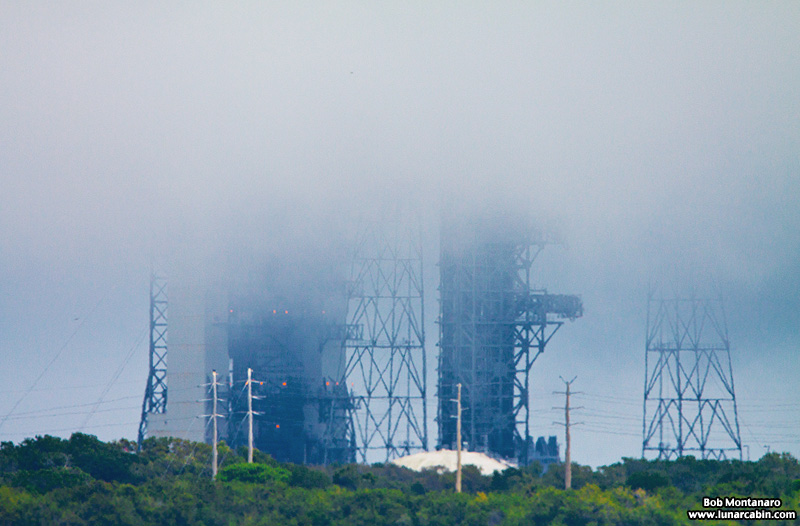 |
|
| The pad in the fog minus the rocket. | |
All contents copyright Lunar Cabin |
|